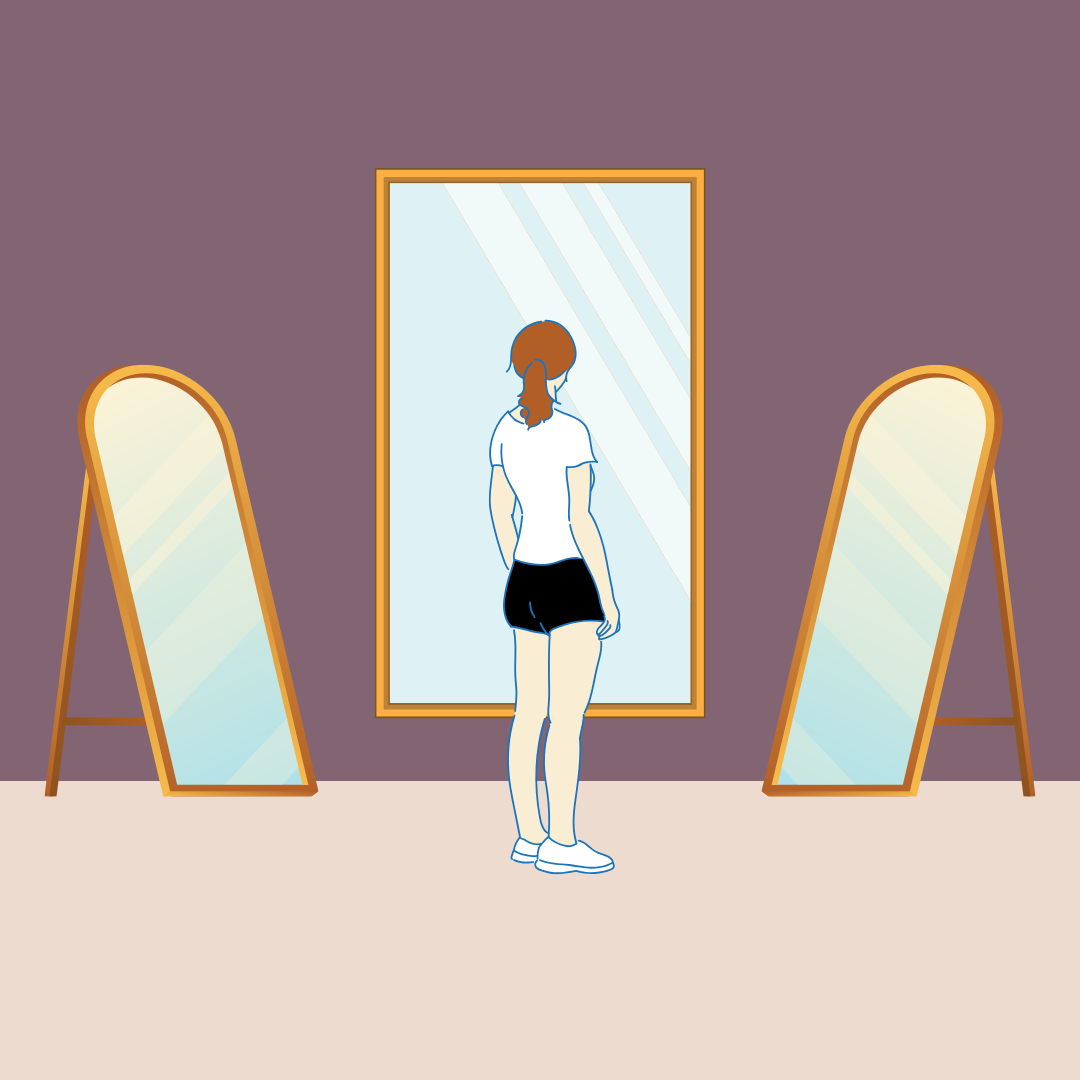Thin is back in. There are hundreds of types of thin, and they are all in. Ozempic is in. All natural, whole foods are in. Heavy lifting is in. Lightweight pilates is in. High intensity interval training is in. Yoga is in. Vegan diets are in. Carnivorous meals are in. Keto is in. Paleo is in. No alcohol is in. Only alcohol is in. The 12-3-30 is in. The stairmaster is in. Eating disorders are in. Thin is in. But I don’t think it was ever out.
The media has set the standards since the late 19th century, and the depiction of fatness as a societal villain has existed since around then as well. In recent times, we’ve seen an entire digital landscape built around the human body; influencers and celebrities have taken on various approaches to sharing their “fitness journeys” on their platforms. From niche echo chambers to curated facades, social media algorithms rarely paint the whole picture. Instead, audiences consume bits and pieces and take the liberty of connecting whatever dots they can find in order to piece together a full story. And in some cases, influencers fabricate stories for us all in the name of selling their lifestyles. Beyond these celebrities and their “thinspo,” there also exists the body positivity movement. The evolution of which underscores the notion that thin bodies have always been in. Lastly, while it is common knowledge that the patriarchy plays a critical role in women’s perception of their own bodies, there is something to be said about the potential for monetary gain within a career centered around selling thinness to a vulnerable audience.
It’s no secret that virtually every platform is plagued by niche extremities. On X, TikTok and Tumblr, it only takes a few clicks to tumble down an elusive rabbit hole. Once the walls start closing in, it’s difficult to acknowledge that you are trapped in an echo chamber. Whether it is a constant stream of gym videos or a never ending thread of pro-anorexia commentary, it only takes one pull of a loose thread for the chaos to unravel. Many people claim that thin is back because of the resurgence of late ’90s and early 2000s fashion. The dangerous revival of “heroin chic” from the supermodels of the late ’90s has sparked a conversation about thinness. But, if you look around in the real world, you’ll find that while the trend seems to have resurfaced in the blink of an eye; real people are not becoming Kate Moss overnight. This movement is almost entirely internet-based, and like most other trends, this resurgence is occurring within a filter bubble and has little impact on those not on social media sites. “Heroin chic” is simply another label we can slap on the same glamorized thin aesthetic in order to keep it trending.
In addition, influencers have taken this obsession with thinness and made entire careers on it. There are two main components to the rise of any body type trend: the visual aesthetic of the human body and the means — usually through dieting and exercise — that consumers should go about to achieve that ideal. The largest problem that makes these trends so difficult to emulate is the disconnect between the visual aesthetics being promoted and the lifestyles being promoted alongside them. There are so many key players in the systems of our bodies, and we only see a sliver of what influencers and celebrities choose to share with us. Everything from genetic makeup to editing apps to extreme disordered eating can play a role in the bodies we are seeing online. One thing is for sure: there isn’t profit in attributing your physicality to a high metabolism or facetune. The money lies in the sponsorships, supplements and subscription programs. So that is what we are sold. Celebrities are able to inject GLP-1s like Ozempic into one arm while using the other to type out a brand deal for an all-natural nutritional supplement, but all viewers see is the body presented to them and the tangible product they can buy to achieve that figure. The Ozempic is entirely out of the frame. This manipulation is dangerous for younger generations who idolize these celebrities.
While the introduction of weight loss drugs is relatively new, if we trace the body positivity movement to its origins, we see that from rack clothing sizes to runway modeling, smaller bodies have always been the standard. The body positivity movement has always been about “going against the grain” and this “grain” has always been a societal ideal of thinness. This movement was never about taking over the trends and making natural bodies the new ideal. It has always been about self-acceptance and love despite the promotion of thinness in the media. Adding a layer of complexity is the fact that many body positivity influencers are abandoning their old platforms and hopping on the semi-glutide bandwagon. Followers have conflicting attitudes about the general hypocrisy of the matter. Can someone champion self-acceptance to mass groups of people only to change the very things they so confidently promoted acceptance of? Or are we limiting individual self-empowerment by denying these influencers the freedom to change their bodies as they see fit? I believe that though these body positive influencers have every right to change their stance, a shift like this speaks volumes to the way trends of thinness have taken over the digital world.
The world of body trends and fashion is a constant pressure cooker, and individuals put themselves through it in hopes of coming out a diamond. There is a patriarchal aspect to this. The deluded idea that a woman’s best trait is her beauty dates back centuries. Before women could vote, they could put on lipstick. Before women could read, they could sit still and look pretty. Women were forced to adopt a submissive role as their rightful place within the patriarchy for so long, and remnants of those ideas seeped into a lot of our modern models. However, I think the commodification of human bodies and lifestyles through social media plays an equal role. The patriarchy may be what has planted the seeds about what our bodies should look like, but when people realized that there is profit in insecurities, this social media movement sprawled.
Thinness, ironically, comes in many forms. There are hundreds of ways to get thin, it just depends on what your algorithm shows you on that particular day. Thinness, in its many forms, may have been trending since the 19th century and it may continue for the rest of our lives, but trends only govern as much of your life as you choose to let them. The sparkling beaches of celebrity Instagram feeds boast thin, manufactured bodies in bikinis that teeter the line of being almost attainable, yet far out of reach.
In the real world, you’ll come across normal people basking in the sun, spiking a volleyball or riding the waves. When you can, actively choose to live in the real world in a real body rather than in a feed. In the real world, thinness is the least interesting part about humans, and the sooner we choose to exist outside of trends, the more fulfilled our lives will become.
Ameya Jain, FCRH ’28, is a psychology major from Los Angeles.









































































































































































































